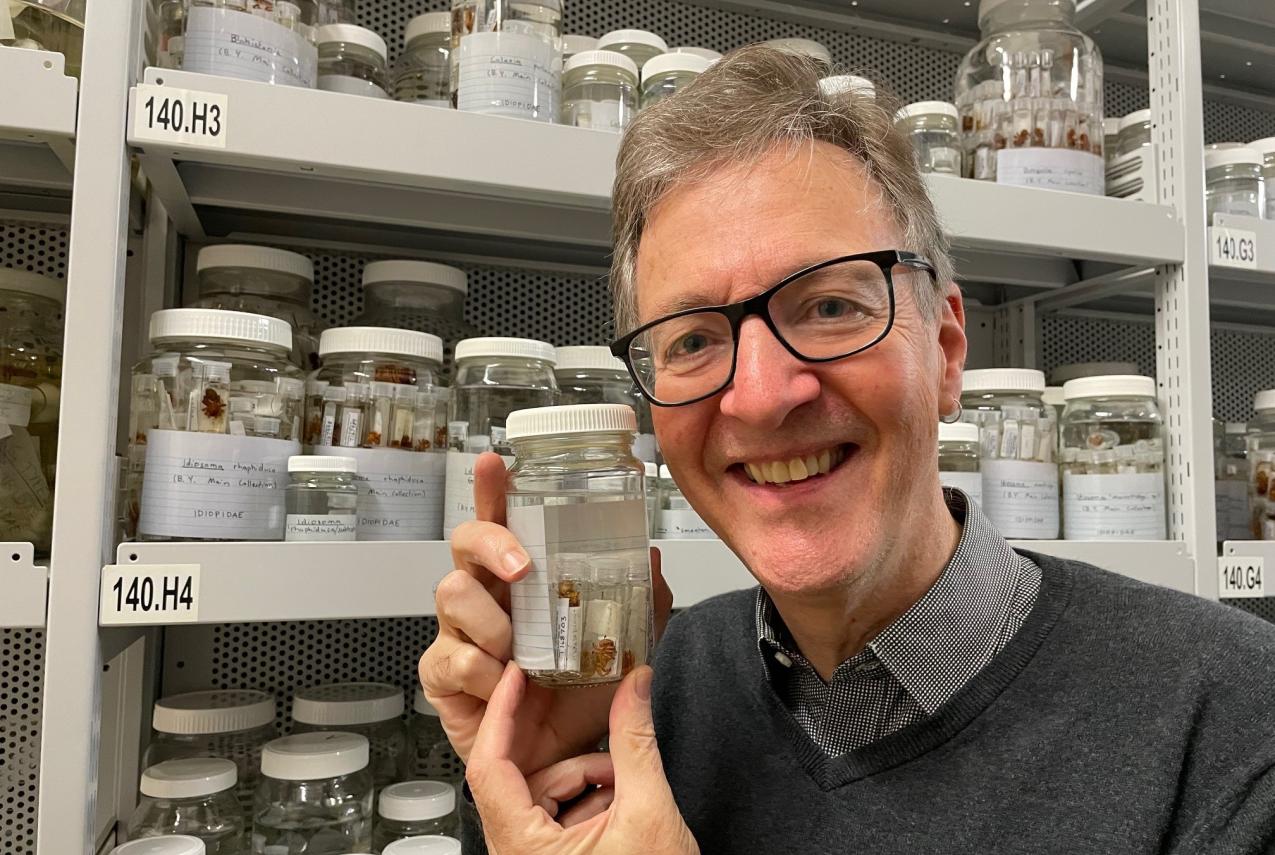The Western Australian Museum is breathing new life into decades of biological discovery through its Collections and Research Legacy Project, a major initiative designed to digitise, preserve, and share the Museum’s rich repository of specimen data with scientists and the public alike.
A key focus of this initiative is the Legacy Collection, which includes previously untapped biodiversity data housed in the WA Museum’s archives.
Among the collections being revitalised is the Barbara York Main Collection, an irreplaceable assemblage of more than 3,500 trapdoor spider specimens that captures a snapshot of the diversity and evolution of these spiders in Western Australia's Wheatbelt.
The project led by Dr Mark Harvey, WA Museum Associate and former Head of Terrestrial Zoology at the Museum, involves a specialist team working to meticulously identify, digitise, and preserve these unique specimens.
The resulting data—including precise locations and habitat details—will be made publicly available through platforms like the Atlas of Living Australia and WA’s Dandjoo state-wide biodiversity data platform.
This effort not only unlocks vital historical records but also enables modern biodiversity and conservation research.
Trapdoor spiders, many of which are short-range endemics (found only in one small area) that depend on specific soil and vegetation types, are especially vulnerable to environmental change.
By preserving these collections and their metadata, scientists can assess extinction risks, map past and present species distributions, and inform targeted conservation strategies.
The contribution of the late Dr Barbara York Main (1929–2019), affectionately known as Australia’s ‘spider lady’, is reflected in her collection.
Her decades-long work in the Wheatbelt, where she grew up, documented the ecology of trapdoor spiders during a time when much of the region remained covered in native woodlands and heathlands—habitats that have since changed.
Dr Main’s meticulous field notes and specimens, housed at the WA Museum, provide an invaluable record of the Wheatbelt’s historical biodiversity.
By digitising collections like hers, the Western Australian Museum transforms historical data into accessible resources for scientists worldwide, supporting biodiversity research and conservation.
This initiative safeguards vital knowledge, ensuring it is available to support pioneering research on Australia’s unique natural heritage.
The Legacy Collection Project is funded by the Foundation for the WA Museum as part of the strategic initiative Improving Accessibility to the WA Museum State Collection for All.
